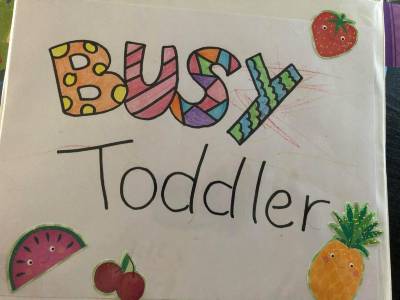Co-sleeping with your baby – how to do it safely
Bed-sharing can be a great thing
What’s sweeter than cuddling up with your baby all night?
It’s innocent enough to sleep close with your little one.
However, Co-Sleeping has become a sort of heated term, with many opinions on either side it can become difficult to decide what the best choice for your family is.
Sleeping together in a family bed may seem appealing, but it does come with some risks.
One of the risks being a notably increased chance of SIDS (sudden infant death syndrome).
On the other hand, having your little one sleep in their own bassinet or crib in your room, can protect against SIDS, and makes feedings and night wakings easier to manage.
After all it is a personal choice whether or not to share a bed with your baby but you should always make sure you make those decisions based on your best knowledge.
Keep reading to make sure your baby is safe while co-sleeping.
There are affiliate links in this post, meaning, at no additional cost to you, I will be compensated if you click through and take action. For full disclosure click here.
What’s the difference between co-sleeping and bed-sharing?
Both these terms are used interchangeably, but they’re not the same thing and it’s important to know the difference between them.
Co-sleeping is when you sleep in close proximity to your little one, this can mean in the same bed or in the same room (this would then be considered room-sharing).
Bed-sharing is when you sleep in the same bed as your little one, or share the same sleeping surface as them.
Bed-sharing is much like co-sleeping, however, it’s not a healthy practice due to the increased risk of SIDS.
The safest way to co-sleep with your youngster is to room-share.
That way, your little one will sleep in the same room as you, but in his or her own bassinet or crib.
It’s actually recommended to room-share with your child until they’re at least 6 months old, up until their first birthday.
Co-Sleeping Benefits
• Infants fall asleep faster and stay asleep for longer
• Mothers feel better rested
• Night feedings become easier by promoting breastfeeding
• According to research, infants that co-sleep have stronger relationships with their parents emotionally, as well as with other people
• When sleep safety precautions are taken, the risk of SIDS is reduced
Co-Sleeping Drawbacks
• Infants can develop a sleep crutch and won’t be able to fall asleep without a parent nearby
• Infants may begin to display anxious behaviors and have an inability to fall asleep without being held, rubbed on the back, or patted until they fall asleep
• One bedtime doesn’t fit for all children, especially when they have an age difference
• Your own sleep quality may end up suffering if you have actives and restless youngsters
• Your relationship with your spouse may suffer as your alone time together may become limited
• There is still going to be a risk of SIDS and even suffocation in babies
When NOT to Co-Sleep
There are some circumstances when it’s advised against co-sleeping, due to the increased risk and danger to your youngster :
• If either yourself or your spouse are smokers (even if you don’t smoke inside)
• If either yourself or your spouse have been drinking alcohol or taken drugs (medication that can make you drowsy)
• If you’re extremely tired
• If your baby was born premature
• If your youngster was born underweight
If any of the above points apply to either yourself or your spouse, you should never sleep together with your child.
Also, never sleep on an armchair or sofa with your little one, as the risk of SIDS is increased by 50 times.
This may also be interesting:
– Stop breastfeeding at night for toddlers
– Disposable vs. cloth diapers
– Most useless baby products
– Nursery must-haves for new parents
– How to swaddle your baby with video
Co-Sleeping Checklist
Bed Choice
The best option is to use a large mattress and to place it on the floor.
Ensure that there aren’t any crevices that your little one can get wedged in.
The mattress should be firm, smooth, and flat.
Don’t use soft surfaces.
Bed Sheets
Ensure that your sheets are kept secured and can’t be pulled loose.
Remove Blankets and Pillows
When sleeping with infants, it’s important to remove blankets and pillows from the bed as there’s a risk for suffocation.
Keep yourself and your child warm by dressing warmly.
Don’t dress to warmly though, that will cause your youngster to overheat with the added warmth from body heat.
Use Bed Rails
If your bed isn’t on the floor, use bed rails to prevent your infant from rolling off the bed and falling.
Ensure that there isn’t space between the mattress and foot board or headboard.
Childproof Your Room
This point can’t be emphasized enough, ensure that all rooms in the house that your little one has access to are childproof.
For example, if your room is upstairs, you should have a child gate installed by the top of your staircase.
Pin this simple co-sleeping checklist for later:

Alternatives to Co-Sleeping
There are several alternatives to co-sleeping that are safer and provide many of the same benefits as traditional co-sleeping.
Your little one’s crib or bassinet can be placed next to your bed, that way, he or she will still be close to you without being at risk for SIDS.
There are also “co-sleeper” devices that are now being sold, they look like a bassinet but without one side.
This device can be attached directly to the side of your bed, so baby is still sleeping next to you, but without the risk of being rolled onto by mistake.
Co-Sleep Parenting Tips
• Try to create a consistent and regular nap schedule for your little one. If your child has a consistent sleep routine during the day, their sleep during the night will be regulated
• Put your youngster to bed earlier, around 6:30 or 7:00 PM. Don’t keep your little one awake to get them tired for during the night. When your baby is overtired, they’ll have a harder time falling asleep. When your baby goes to bed earlier, they’ll sleep longer.
• When you make changes to your littles ones schedule, do so slowly. Don’t suddenly make changes. For example, if their bedtime is usually at 9:00 PM but you would like to change it to 7:00 PM- make your child’s bedtime a little earlier each night until the goal time has been reached.
• Find a routine that’s soothing for your youngster and stick to it. This could be reading them a book before bedtime or singing them a lullaby at the same time each night before bed.
• Develop keywords that will signal your little one that it’s time to go to bed. This could be a soft spoken phrase like it’s sleepy time, or a sound like ssshhh. Repeat the phrase or sound when you’re soothing your child to go to sleep so that he or she begins to associate it with bedtime.
• Provide your child with a comfortable environment to sleep in. Some youngsters need more darkness than others, while others need to hear some form of sound to be able to fall asleep. Whatever the case may be, make sure that your child has cozy sheets and comfortable sleepwear.
• Don’t immediately rush to your child whenever they make a noise. Recognize the difference between a whimper in sleep from a real cry. If you’re not certain, rather wait for a minute by your little one’s door so that you won’t wake them up if they’re actually sleeping.

My two cents to co-sleeping (from a mom who did it)
I personally shared my bed with my baby from day one until the day she turned two years old and moved over to her own room.
I knew about the pros and cons and decided to go ahead and had my baby right next to me all night mainly for a few simple reasons:
- Breastfeeding was so much easier – I would just roll on my side and feed the baby laying next to me
- I would wake up from the smallest cry or movement which made it easy to react to whatever
- Baby cuddles are the best
If you plan on co-sleeping I would highly recommend a mattress protector on top of the tips already mentioned above – I can’t even tell you how often it already saved our mattress.
If you are a heavy sleeper I would think twice though since the chance of you accidentally rolling on top of your baby is just too big.
However you decide – you got this mama!
Did you practice co-sleeping with your newborn?
Do you need ways to keep your kid entertained while working from home? Get fun worksheets, coloring pages and more for free when you subscribe to my emails.
And find your tribe of like-minded parents in our Facebook group.










Thank you for the final explanation, I find it very confusing that everyone is calling different thing with the same ‘co-sleeping’ name. So according to that I am bed-sharing. I find it pretty safe, unlike expected. Although I think it’s time to transition my baby to her own bed soon. I’m going to use HWL sleep training method that I’m following since the very beginning and it’s commonly recommended for the transition. My husband says he needs some of his peace back…
I’m glad it was helpful to you 🙂
And I can totally understand your husband – it is so nice to have your bed back to yourself 😀